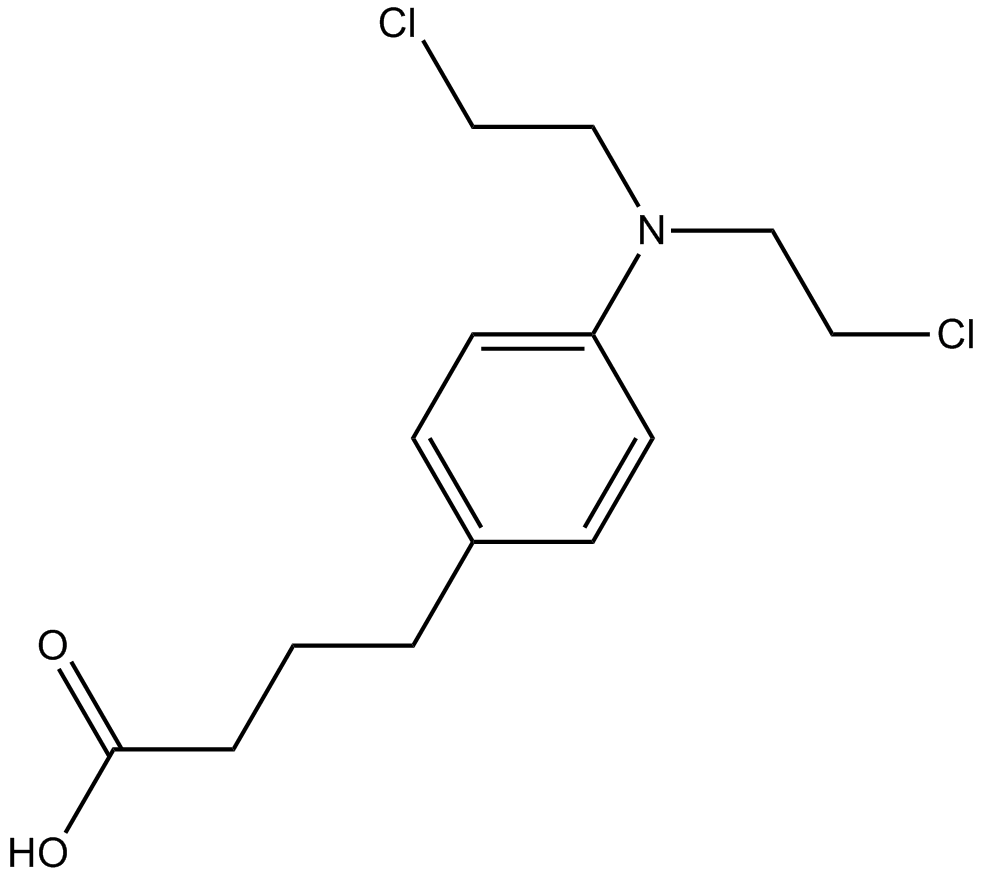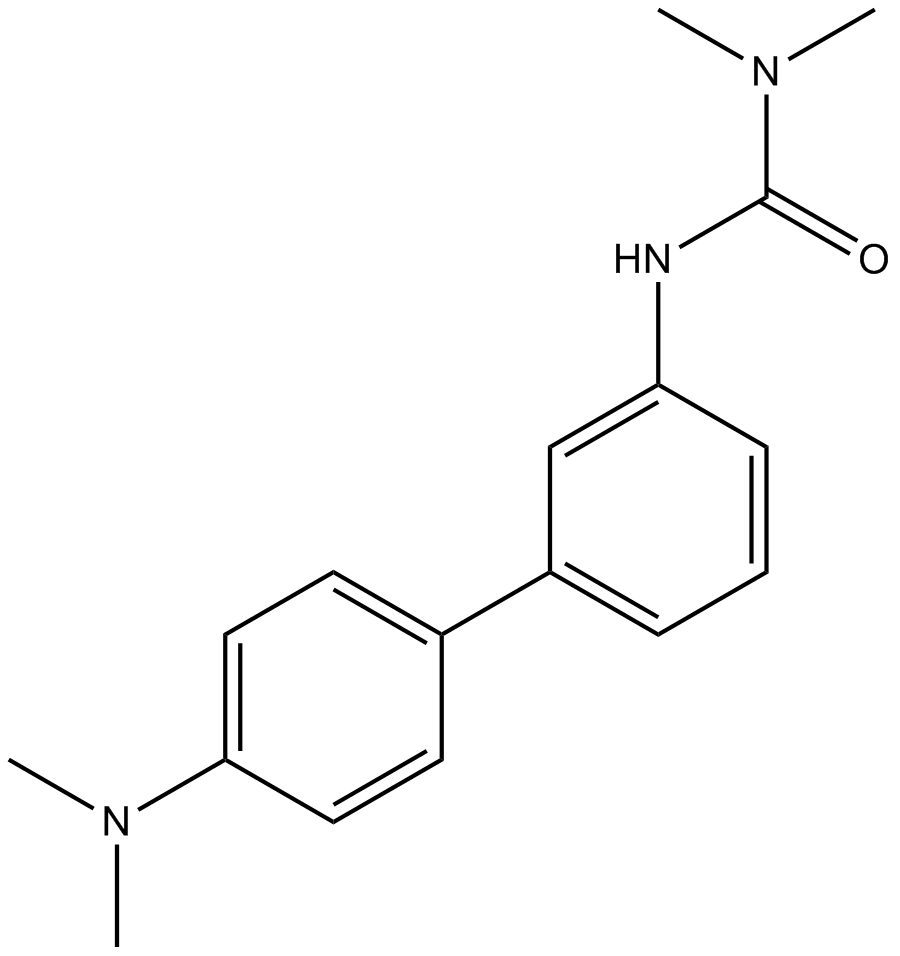Chlorambucil
Chlorambucil is a nitrogen mustard alkylating agent [1]
Chlorambucil is a chemotherapy medication commonly used for the treatment of chronic lymphocytic leukemia (CLL). Chlorambucil forms intra- and inter-strand crosslinks in DNA, the latter of which prevents DNA replication and transcription leading to cell death [1]
In embryonic mouse limb buds directly exposed to chlorambucil at 1 ~ 2 μg/mL, the number of affected cells reached a plateau at 48 hr after treatment and decreased significantly by 72 hr, at which time exposure to a second dose of chlorambucil showed little or no effect. Chlorambucil-induced cell death was restricted almost exclusively to regions of undifferentiated mesenchymal cells [2].
In CLL patients, chlorambucil treatment (0.9 mg/kg given over 3 days) induced greater decrease in lymphocyte count against the control group [3]. In pharmacokinetic studies in tumor-bearing dogs receiving 4 mg/m2 metronomic chlorambucil, the LD50 and IC50 of chlorambucil were 270 μM and 114 μM for SF767 cells, and 390 μM and 96 μM for U87-MG cells, respectively. In human microvascular endothelial cells and human progenitor derived endothelial colony forming cells, the IC50 of chlorambucil was 0.53 μM and 145 μM, correspondingly [4].
References:
[1]. Mattes W B, Hartley J A, Kohn K W. DNA sequence selectivity of guanine-N7 alkylation by nitrogen mustards. Nucleic Acids Research, 1986, 14(7): 2971-2987.
[2]. Sadler T W, Kochhar D M. Chlorambucil-induced cell death in embryonic mouse limb buds. Toxicology and Applied Pharmacology, 1976, 37(2): 237-256.
[3]. Begleiter A, Lee K, Israels L G, et al. Chlorambucil induced apoptosis in chronic lymphocytic leukemia (CLL) and its relationship to clinical efficacy. Leukemia, 1994, 8(1): S103-S106.
[4]. Reese M J, Knapp D W, Anderson K M, et al. In vitro effect of chlorambucil on human glioma cell lines (SF767 and U87-MG), and human microvascular endothelial cell (HMVEC) and endothelial progenitor cells (ECFCs), in the context of plasma chlorambucil concentrations in tumor-bearing dogs. PLoS One, 2018, 13(9): e0203517.
| Physical Appearance | A solid |
| Storage | Store at -20°C |
| M.Wt | 304.21 |
| Cas No. | 305-03-3 |
| Formula | C14H19Cl2NO2 |
| Solubility | insoluble in H2O; ≥12.15 mg/mL in DMSO; ≥17.7 mg/mL in EtOH |
| SDF | Download SDF |
| Canonical SMILES | ClCCN(CCCl)C(C=C1)=CC=C1CCCC(O)=O |
| Shipping Condition | Small Molecules with Blue Ice, Modified Nucleotides with Dry Ice. |
| General tips | We do not recommend long-term storage for the solution, please use it up soon. |
Quality Control & MSDS
- View current batch:
Chemical structure










